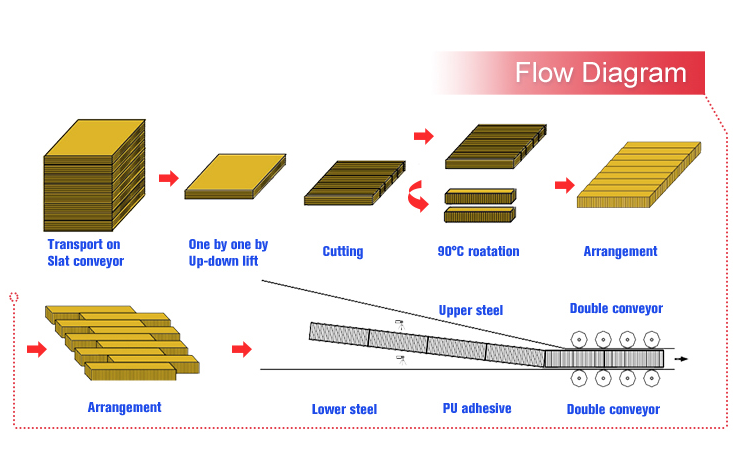Table of Contents

Understanding the Pros and Cons of Sandwich Panels
When it comes to constructing buildings and structures, choosing the right materials is crucial for ensuring durability, efficiency, and cost-effectiveness. One material that has gained significant popularity in recent years is sandwich panels. These panels consist of three layers - a core material sandwiched between two outer layers. In this article, we will delve into the advantages and disadvantages of sandwich panels to help you make an informed decision for your construction projects.
Advantage 1: Excellent Thermal Insulation
Sandwich panels are known for their excellent thermal insulation properties. The core material, often made of foam or a similar material, acts as an insulator, preventing heat transfer between the inner and outer layers. This insulation helps maintain a comfortable temperature inside the building, reducing the need for excessive heating or cooling. As a result, sandwich panels contribute to energy savings and a more sustainable environment.
Advantage 2: Lightweight and Easy to Install
Compared to traditional construction materials, sandwich panels are lightweight, making them easier to handle and install. The lightweight nature of these panels also reduces the load on the structure, allowing for more design flexibility. Additionally, the installation process is relatively quick and efficient, leading to time and cost savings.
Advantage 3: High Strength and Durability
Despite their lightweight nature, sandwich panels offer high strength and durability. The combination of the core material and the outer layers results in a strong and rigid structure capable of withstanding various forces, including wind, snow, and earthquakes. This durability ensures the longevity of the building, minimizing the need for frequent repairs and maintenance.
Advantage 4: Versatility in Design Options
Sandwich panels come in a wide range of designs, colors, and finishes, offering architects and builders immense flexibility in creating visually appealing structures. Whether you prefer a modern, sleek look or a more traditional aesthetic, you can find sandwich panels that meet your design requirements. This versatility makes them suitable for various applications, including residential, commercial, and industrial buildings.
Advantage 5: Soundproofing Capabilities
Another advantage of sandwich panels is their soundproofing capabilities. The core material, typically made of materials with sound-absorbing properties, helps reduce noise transmission, making the building quieter and more comfortable. This feature is particularly beneficial in areas with high noise pollution or where privacy is crucial, such as office spaces, hospitals, and schools.
Advantage 6: Fire Resistance
Sandwich panels are designed with fire safety in mind. The core material used in these panels is often fire-resistant, preventing the spread of flames in case of a fire outbreak. This fire resistance not only protects the occupants but also helps contain the fire, minimizing the damage to the building and surrounding structures.
Disadvantage 1: Cost Considerations
While sandwich panels offer numerous advantages, cost can be a potential disadvantage. Compared to traditional construction materials, sandwich panels may have a higher upfront cost. However, it is important to consider the long-term benefits and potential savings in energy consumption and maintenance costs.
Disadvantage 2: Limited Load-Bearing Capacity
Although sandwich panels are known for their strength, they have a limited load-bearing capacity compared to materials like concrete or steel. This limitation means that careful consideration must be given to the design and structural requirements of the building to ensure the panels can support the intended loads. In some cases, additional structural elements may be required to enhance the load-bearing capacity.
Disadvantage 3: Vulnerability to Moisture
Sandwich panels, especially those with organic core materials, can be susceptible to moisture-related issues such as water infiltration and condensation. Proper waterproofing and insulation measures must be taken during installation to prevent these issues. Regular inspections and maintenance are also necessary to ensure the panels remain moisture-free and in good condition.
Disadvantage 4: Limited Customization
While sandwich panels offer a range of design options, customization possibilities may be somewhat limited compared to other construction materials. The dimensions and shapes of the panels may be predetermined, requiring careful planning to ensure they fit the intended design. However, advancements in manufacturing techniques are gradually expanding the customization possibilities for sandwich panels.
Disadvantage 5: Environmental Considerations
Although sandwich panels contribute to energy efficiency during the building's operational phase, the production of these panels can have environmental implications. Some sandwich panels may contain materials that are not easily recyclable or have a high carbon footprint. It is essential to choose panels from manufacturers committed to sustainable practices and consider the overall life cycle impact of the panels.
Conclusion
Sandwich panels offer a range of advantages, including excellent thermal insulation, lightweight construction, high strength, and design versatility. They also provide soundproofing capabilities and fire resistance. However, it is important to consider the cost, load-bearing capacity, vulnerability to moisture, customization limitations, and environmental impact when deciding whether sandwich panels are suitable for a specific project. By carefully weighing the pros and cons, builders and architects can make informed decisions that meet their construction requirements while ensuring long-term durability and efficiency.

